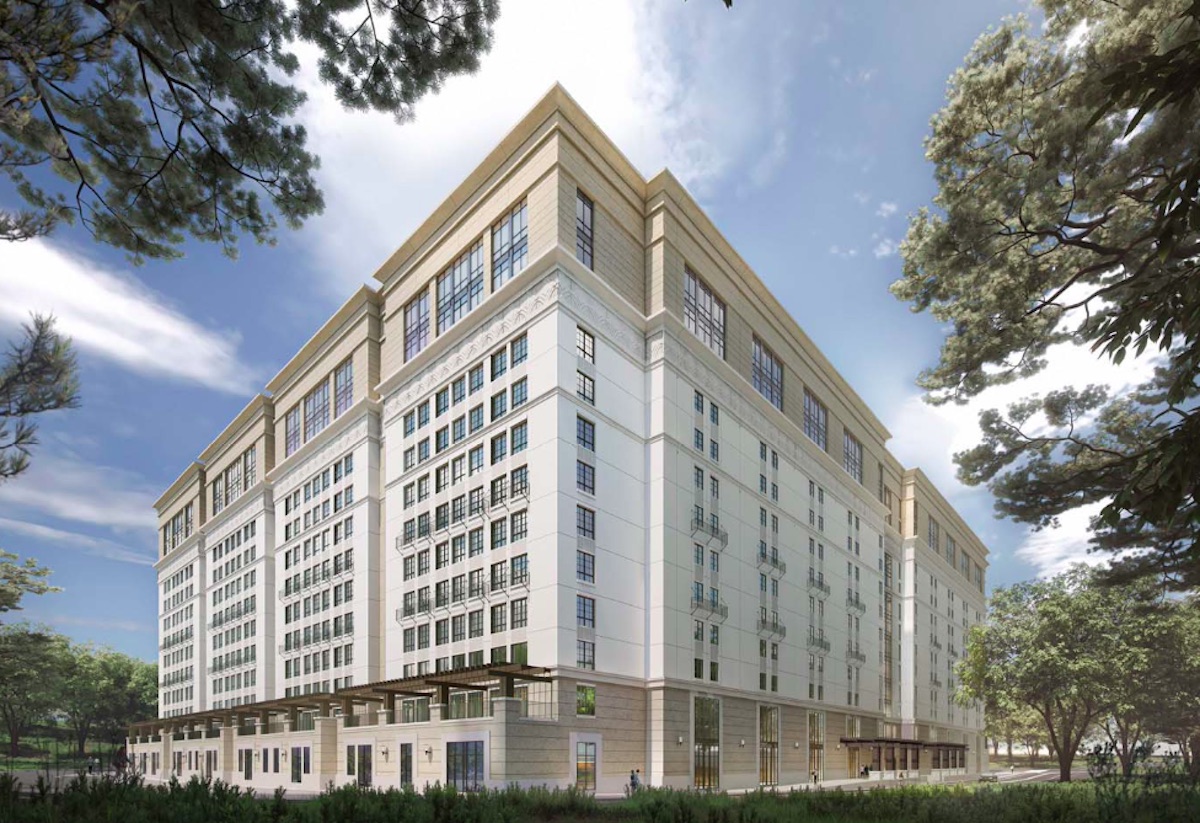Digging Deeper into Dormzilla
UC Office of President Denies Release of UCSB-Munger Agreement

UC Office of President Denies Release of UCSB-Munger Agreement

Munger Hall’s controversial design elements ― mainly its windowless bedrooms and hyper-dense floorplan ― have thus far dominated discussions and debate around the project. But a closer look at scoping documents related to the UCSB proposal provides a more complete picture of the building, which, at 1.68 million square feet, would qualify as the largest dormitory in the world. They also offer insight into the challenges the project will likely face when it goes before the UC Regents and California Coastal Commission for approval. We look at many of those details here.
“Electricity to serve the Project would be provided by Southern California Edison and from existing photovoltaic arrays located on the Main Campus,” states Munger Hall’s Notice of Preparation, or NOP, which UCSB submitted to county planners this summer. “It is estimated that 6,000 MWh/year of electricity would be used by the project that is generated on the UCSB campus.” (As a point of comparison, the average American home uses 11.7 MWh/year.) Natural gas for the dorm, which would primarily be used for clothes dryers and some food preparation, would come from the Southern California Gas Company through an existing line along Mesa Road.
While the NOP doesn’t provide any specific figures related to anticipated water usage, it notes Munger Hall would draw its supplies from the Goleta Water District. The Goleta Sanitary District would handle its wastewater. The NOP suggests the dormitory, which is expected to house a small town population of 4,500 undergraduates, “may result in an increased water supply demand [and] increased wastewater generation.” A 10,700-square-foot Central Utility Plant at the site would provide chilled water. The plans also call for a 5.5-acre “infiltration pond” that would be located just south of Munger Hall. Stormwater from the property and other parts of campus would flow there and be treated by a newly planted wetland system “that removes pollutants through physical, biological, and chemical processes.”
The size and scope of the project would necessitate multiple modifications to nearby Mesa and Stadium roads, the NOP explains. At their intersection, Stadium Road would be widened to provide a left-turn lane and a separated right-turn lane with a striped crosswalk. The alignment of Mesa Road would be shifted to the north to provide the right-of-way needed for the dormitory, and a one-way loading and delivery area would be added along the street. And construction ― anticipated to begin spring 2022 and conclude by fall 2025 ― would close all or portions of both roads for that three-year duration.
Sign up for Indy Today to receive fresh news from Independent.com, in your inbox, every morning.
The dormitory wouldn’t include any parking for residents, the NOP states. “As part of the Project, UCSB would implement a campus-wide requirement generally prohibiting first-year students from bringing cars to campus,” it says. The only on-site parking at Munger Hall would be limited to 30 spaces on the north side of the building to accommodate transportation services such as Uber and Lyft, deliveries, and passenger drop-offs and pick-ups. Two big bicycle parking areas ― one for 1,000 bikes, the other for 2,000 ― would be added to the property.
Due to the location of the UCSB police station and County Fire station near the site, “the project has the potential to result in potentially significant short-term impacts to emergency vehicle circulation,” the NOP says. “The Project may also have the potential to result in long-term evacuation impacts due to the large number of residents that would be located at the project site.” The area’s sudden increase in population could also result in “increased fire and police service demands that require the provision of new or physically altered facilities.”
The slopes adjacent to the project site support a variety of native and non-native trees and plants, as well as areas of wetland and oak woodland that are designated as Environmentally Sensitive Habitat Area (ESHA). The construction and occupancy of Munger Hall would have the potential to result in “significant short- and long-term impacts to ESHA and other sensitive biological resources” at and near the property, the NOP notes. Impacts to the adjacent Goleta Slough are also possible, it says.
Last month, the Independent filed a public records request with the University Office of the President (UCOP) for a copy of the agreement between UCSB and Munger Hall’s designer and partial funder, Berkshire Hathaway vice president and amateur architect Charlie Munger, who said he would donate $200 million toward the estimated $1.5 billion project but only if his blueprints were followed precisely. This week, UCOP general counsel Dan Scannell said a “preliminary agreement” between the University and Munger exists “that is conceptual in nature.” It is therefore not releasable, he said.
“[It] is not a firm or final commitment or a binding obligation for the donor to make a contribution towards the Munger Hall agreement,” Scannell explained. Negotiations are ongoing, and making the pending contract public could jeopardize them, he said. “Therefore, at this time, the agreement is exempt from disclosure under Government Code section 6255, because the public interest in ensuring the possibility of donated funding for UC student housing outweighs the interest in disclosure of said conceptual record,” he said.
Find all of our Munger Dorm stories at independent.com/munger-dorm.
Support the Santa Barbara Independent through a long-term or a single contribution.
Please note this login is to submit events or press releases. Use this page here to login for your Independent subscription
Not a member? Sign up here.